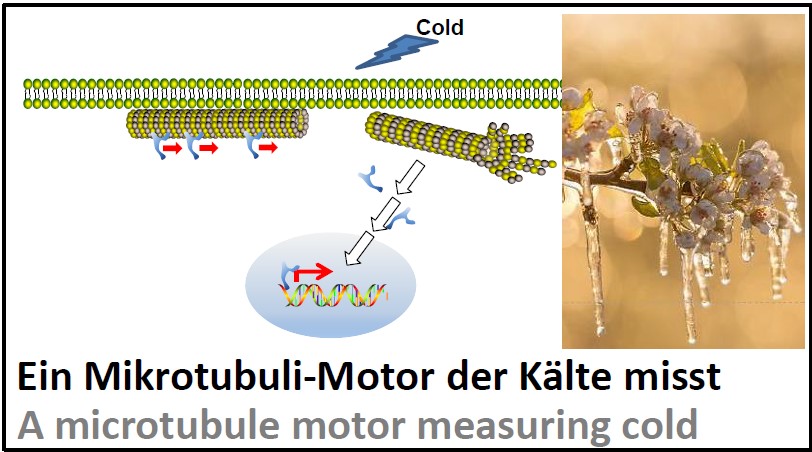2022_02 A Microtubule Motor as Plant Thermometer
 |
What was the question behind this work? Climate change not only means hot and dry summers, but also blurred borders between seasons. A warm March, followed by a frosty April mean often great losses in fruit and wine culture. How can plants sense cold and respond swiftly to the challenge? In earlier work (Xu et al. 2018, more...) we found a very curious thermometer - a motor protein that moves along microtubules in the war, but detaches in the cold and moves into the nucleus. What is it doing there? How did we approach the question? We have investigated rice mutants, where this motor was mutated and lost its function, we analysed, under which conditions the coresponding gene is activated and eventually produced this protein in bacteria and tested, whether it can address targeted sequences on the DNA. At the end, we overexpressed the motor in tobacco cells and tested, how this will change the response of genes to cold stress. What did we find out? The mutants died already young, what told us that the motor is important, but not, what for. The gene was especially important for tissues, where cells elongated, what was to be expected for a kinesin. Most exciting were the DNA binding assays. Here, we succeeded to pinpoint a specific motif binding to this motor. This motif was found in the promoter of Cold Box Factor 4, a key regulator for cold adaptation. In fact, overexpression of this motor in tobacco cells rendered those cells cold-resistant and downmodulated the level of Cold Box Factor 4. We conclude that this microtubule motor, under cold stress, detaches from microtubules, moves into the nucleus and steers there the activity of Cold Box Factor 4, which allows the cell to adapt to cold. Veröffentlichung 180. Xu A, Hummel S, Harter K, Kolukisaoglu U, Riemann M, Nick P (2022) The Minus-End-Directed Kinesin OsDLK Shuttles to the Nucleus and Modulates the Expression of Cold Box Factor 4. Int J Mol Sci 23, 629 - pdf |
